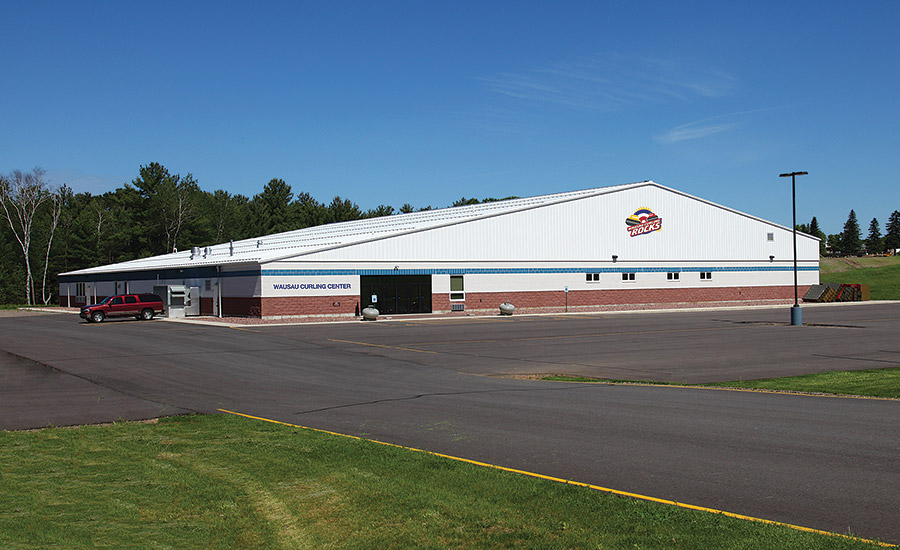The sport of curling is a strategic game like chess, with an element of skill and experience. Played on ice in an indoor controlled environment, temperature and humidity are critical to setting ice speed and the amount of “curl” the stone will incur.
This was just one of the HVAC engineering challenges that needed to be addressed when designing the $5.2 million Wausau Curling Center in Wausau, WI. The new facility is reported to be among the largest and most technologically advanced curling centers in North America and can accommodate up to eight games simultaneously.
Before the Wausau Curling Club could move into its new home, JDR Engineering Inc. of Fitchburg, WI, needed to address several other mechanical necessities. The firm needed to address the variable loads without over-ventilating which would lead to extremely high utility bills. The engineering team also needed to install a cost-effective air handling system to heat and cool hospitality and viewing areas; minimize energy costs with energy recovery technology; control temperature to prevent fogging of glass between the warmed hospitality area and much colder competition area; and deal with exhaust smoke, grease, and odors from an open kitchen area.
JDR Engineering worked with Malbrit Mechanical Inc. of Wausau, WI, and Greenheck representative Vyron Corp. in Milwaukee to accomplish these goals.
A large viewing and hospitality area with a working kitchen surrounds the curling competition area and needed to be efficiently heated, cooled, and ventilated for post-competition parties and other activities. On most days, The Curling Center has few occupants. However, when a curling competition takes place, hundreds of competitors and spectators may gather in the hospitality and viewing areas. Large amounts of outdoor air are required for these diverse loads.
Since the all-volunteer, non-profit Wausau Curling Club has no paid maintenance staff and uses the building mostly on a seasonal basis from October through April, a cost-effective, energy-efficient, and easy-to-operate ventilation system was imperative.
Most of the ventilation equipment was installed outside at ground level to eliminate rooftop maintenance. Two pre-engineered energy recovery ventilators from Greenheck, Model ERV with total enthalpy wheels, were installed to handle exhaust air from the restrooms while recovering energy from the exhaust airstream to precondition the ventilation air and reduce heating and cooling energy requirements.
The makeup air units, Model IGX with indirect-fired gas heating, feature an 80% efficient furnace and heating capacities up to 1,200,000 Btuh (input). Supply airflow of up to 9,500 cfm and 3 in of external static pressure help meet peak demand loads when the hospitality and viewing areas are filled to capacity. Two additional rooftop ventilators (Model RV) were installed to efficiently deliver and condition the appropriate mixture of outdoor and return air to the viewing space and hospitality areas.
Two exhaust only kitchen hoods with fire suppression systems handle grilling and other cooking tasks. A Canopy Type II kitchen hood (Model GD2) with single baffle was installed above the dishwasher to exhaust moderate condensation.
Model ESD louvers were installed in the exterior walls to protect air intake and exhaust openings in the building and minimize water penetration. Drain gutters are located on every blade to capture water that is dispersed to the jambs and drained out of the sill.
Jeff Stubbe, president of the Wausau Curling Club, said the ventilation system serving the hospitality and viewing areas “works very well and is whisper quiet.” He’s also pleased with the energy efficiency the club has experienced since moving into the new facility.
“Our club’s overall energy consumption is lower than other curling clubs of similar size,” he stated. “Part of this efficiency is due to the ice field equipment and part is due to the building heat.”
Stubbe also said the kitchen hoods and exhaust system are performing very well and are easy to maintain. ES


